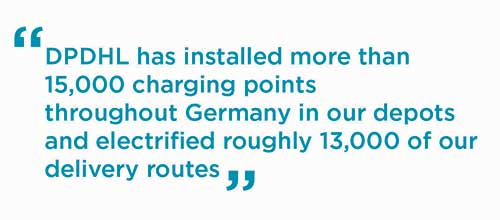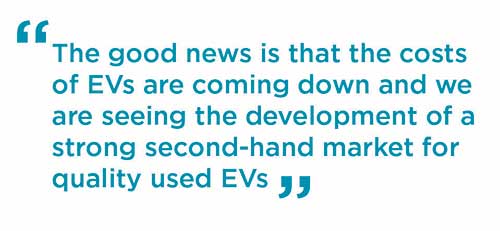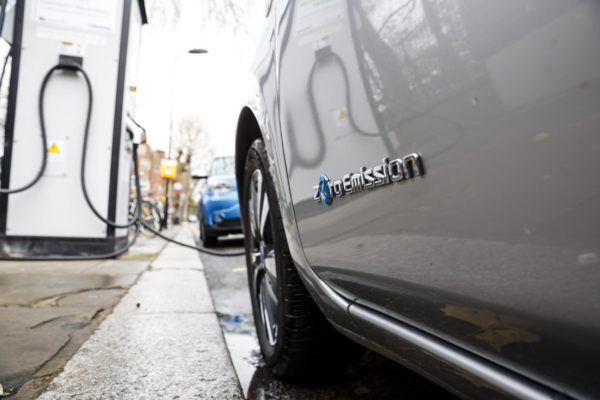The automotive industry has been dominated by a few specific topics in the last year; from coronavirus (COVID-19) to electromobility and the advance of new technologies. But how have these subjects impacted one of the industry’s most important sectors? In a new series, Autovista Group’s Daily Brief journalist, Tom Geggus, speaks with industry insiders to discover how these themes are changing fleets. In this second instalment: electromobility.
While COVID-19’s impact on the automotive industry has been sharp and sudden, the effect of environmental concerns can be considered tectonic. But now the two phenomena are driving change in tandem, with COVID-19 acting as a catalyst for a shift to greener mobility. Pandemic recovery plans and environmental regulations are leading automotive companies and consumers down the road of electrification. Leaders of the European Automobile Manufacturers’ Association (ACEA) recently called for pandemic recovery funds to be channelled into a green comeback.
Analysis conducted by Transport and Environment (T&E) revealed that electric cars will treble their market share in Europe in 2020, with most carmakers on track to meet their EU emissions targets. The environmental lobbying group also pointed to company cars as the ‘low-hanging fruit’ of electrification. T&E claim the segment could be utilised to achieve national climate goals, given that six out of 10 cars sold in Europe are company cars, and that last year 96% of new registrations belonging to the sector were petrol or diesel. So how are fleets adapting to electrification in the wake of COVID-19?
PHEVs meet policy
Management consulting company let it fleet sees the high life cycle cost of vehicles and increasing congestion in cities as cars are chosen over public transport, alongside the desire and need to be environmentally friendly, as leading people to alternative modes of transportation. This means a fundamental role change for fleet managers.
On top of looking after company vehicles, fleet managers will now oversee a wider variety of transport options, not to mention learning about new mobility technologies. As travel needs change with new working practices, combined with the influence of environmental consciousness, flexible approaches to mobility and policy will be essential. Plug-in hybrid electric vehicles (PHEVs) are one key example, as government incentives, OEM supply and emissions regulations drive adoption.
‘Maybe the leasing will be over five to six years into the future because you will be driving less,’ said Alain Duez, co-founder of let it fleet. ‘It could also be that you will have more hybrid cars because driving less means that it will be more in favour of the hybrids tomorrow.’

‘If we look at what the market is offering, you cannot do without the plug-in hybrid, because there is not enough offering yet,’ explained Wim Buzzi, co-founder of let it fleet. ‘It is a good technology. But if you’re going to allow your people to drive plug-in hybrids without recharging them, then you have a crucial error in your policy.’
This opens up the potential for the creation of specific strategies to deal with how these vehicles are used, in line with day-to-day operations. For example, over-reliance on the internal combustion engine (ICE) could render a PHEV’s electric capacities pointless if not properly utilised, making its green credentials effectively null and void. Companies could lay out comprehensive policies for when, where and how to recharge, all dictated by how the car is driven. Equally. the employee could simply submit their fuel bill, so long as it reflects responsible use.
This also lays the road for onboard technologies, like telematics and smartphone applications, all allowing fleet managers to determine employee travel patterns. Accompanied by open communication and transparency, this would help assess the potential options for reducing costs and emissions without affecting efficiency or productivity. However, while driver behaviour might change as well as powertrain technology, the basic need for mobility will not.
‘Maybe in 10 years’ time, people will not have a dedicated company car parked in their car park every day, and they will have a subscription model. But they will always need the car,’ said Buzzi. ‘So, in whatever form, that car will always be included.’
Online trends drive on-road vehicles

COVID-19 also resulted in a surge of online shopping, with 52% of consumers buying more online from domestic retailers and 49% stating they will do so more in the future. But as concerns over the environmental impact of these trends grow, logistics companies are having to double-down on green initiatives.
Deutsche Post DHL (DPDHL) recently announced it is further committing to reducing emissions, in line with its GoGreen programme. By 2050, DPDHL aims to reduce all logistics-related emissions to zero. EVs currently make up 15% of DPDHL’s fleets, an increase of 10% over the last three years. In its 2019 Sustainability Report, the logistics company revealed that it uses over 13,000 vehicles with alternative drive systems, including more than 11,600 EVs.
‘In terms of e-mobility, especially in terms of electrification of our delivery fleet, I believe that we are really one of the leaders in the global market, and we are very proud of that position,’ said Nancy Cui, vice president for global car and van procurement at DPDHL. ‘I think that the percentage of our electric van fleet is, in comparison to the rest of the market, very high, especially in the LCV segment.’ However, integrating EVs into a demanding delivery role did initially invoke some range anxiety.
‘With the introduction of these electric vans in domestic parcel and letter services, we saw at the very beginning some kind of range anxiety of the couriers,’ explained Lars Pappe, Vice President of eMobility design and development at DPDHL. ‘But pretty soon the drivers found out they have an average route length of only 25 to 40 kilometres a day, while the battery capacity of these vehicles exceeds this by far. So even in wintertime, there is enough battery capacity left to return to the depot.’ This realisation, coupled with proper route planning and staff training packages, helped reduce driver range anxiety to a minimum.
Alongside its delivery vehicle subsidiary, StreetScooter, DPDHL also has a strong focus on infrastructure. ‘DPDHL Group has installed more than 15,000 charging points throughout Germany in our depots and electrified roughly 13,000 of our delivery routes here,’ said Pappe.
Presently, the logistics company is tasking a dedicated team with assessing DPDHL sites around the world, working out the electrification needs in terms of infrastructure and energy supply.
Going carbon negative
Microsoft began a PHEV project in Germany roughly three years ago, before the implementation of green incentive schemes. The team discovered the powertrain could be a useful tool when tackling fleet emission targets. However, the PHEVs had to make optimum use of their electric capacities, which meant charging them as often as possible, and not over-using the ICE.
This push to make the most of different environmentally-friendly technologies will be essential for Microsoft as it looks to meet its own green targets. At the start of this year, the computing giant announced it will become carbon negative by 2030, and, by 2050, will have removed all of the environmental carbon it has emitted, either directly or by electrical consumption, since it was founded in 1975.
To combat this, Microsoft is working on a number of measures. It is forming new strategic alliances with existing partners like Shell, to secure supplies of renewable energy. It is extending its internal carbon tax to tackle indirect emissions, as well as electrify its global campus operations vehicle fleet by 2030. How the company goes about acquiring vehicles like these for its fleets involves a rigorous procurement process.
‘We work with a selected number of OEMs,’ explained Michael Pohl, senior procurement engagement manager fleet at Microsoft. ‘We tender them every three to four years, which we just did last year, and now the result is a new setup. With those OEMs, we work closely on our strategy, on discounts, on bonuses, and on agreements.‘
‘Some OEMs do offer discounts for electric vehicles, but this is not common, and they are not in the same league as the discounts on standard drivetrains. Of course, every OEM is keen for us to purchase as many electrified cars as possible, because it will help them with their CO2 emissions and potential penalties they have to pay to the EU, but they cannot necessarily deliver the number of cars we would need in a given or required timeframe.’
Essential infrastructure

As EV demand builds momentum, OEMs must boost manufacturing processes to keep pace while suppliers incentivise sales. These measures will have to go into overdrive as consumers and fleet managers alike begin to see the long-term benefit of electromobility. One of these benefits is the overall cost of owning an EV.
At the end of September, LeasePlan released its annual Car Cost Index, which reveals the true cost of owning a car, including fuel, depreciation, taxes, insurance and maintenance. EVs in the compact and mid-size segment are fully cost-competitive compared to ICE-powered vehicles in countries including France, Germany, and the UK. Autovista Group analysis also reveals that B-segment and C-segment BEVs are competitive compared to petrol models, albeit only because of government incentives.
‘The good news is that the costs of EVs are coming down and we are seeing the development of a strong second-hand market for quality used EVs,’ said Tex Gunning, CEO of LeasePlan. ‘The bad news is that governments are failing to provide the charging infrastructure necessary to satisfy market demand.’
In a recent blog post, Mathijs van der Goot, global lead on EVs for LeasePlan said, ‘it is essential to ensure that the charging infrastructure is aligned with the flourishing e-mobility market.’ There are currently more than 195,000 public charging in Europe, a rise of over 300% since 2014. But this falls a long way short of how many the industry needs. Last year, LeasePlan called for one million charging stations by 2025 and the European Commission estimates 2.8 million will be required by 2030.
A report filed by Technology intelligence company IDTechEX in September outlines the unique demands fleets could have on EV infrastructure. ‘Although electric fleet charging represents roughly 3% of the total charging infrastructure in volume, it constitutes over 20% of the total market value due to the added cost associated with the high-power requirements,’ the report states.
So, the need for improved charging infrastructure to support fleet electrification is vital, even as EVs become more affordably priced. If fleet managers are going to adopt these vehicles on a wide scale, charging anxiety will need to be tackled alongside shrinking price tags. Subsidies and governmental schemes will help tackle this challenge, but the advancement of charging technology will also play its part. But will this be the only big tech change coming to fleets within the next few years?
Want to know how COVID-19 has impacted fleets? Catch up with the series by reading the first instalment here.



 Schließen
Schließen